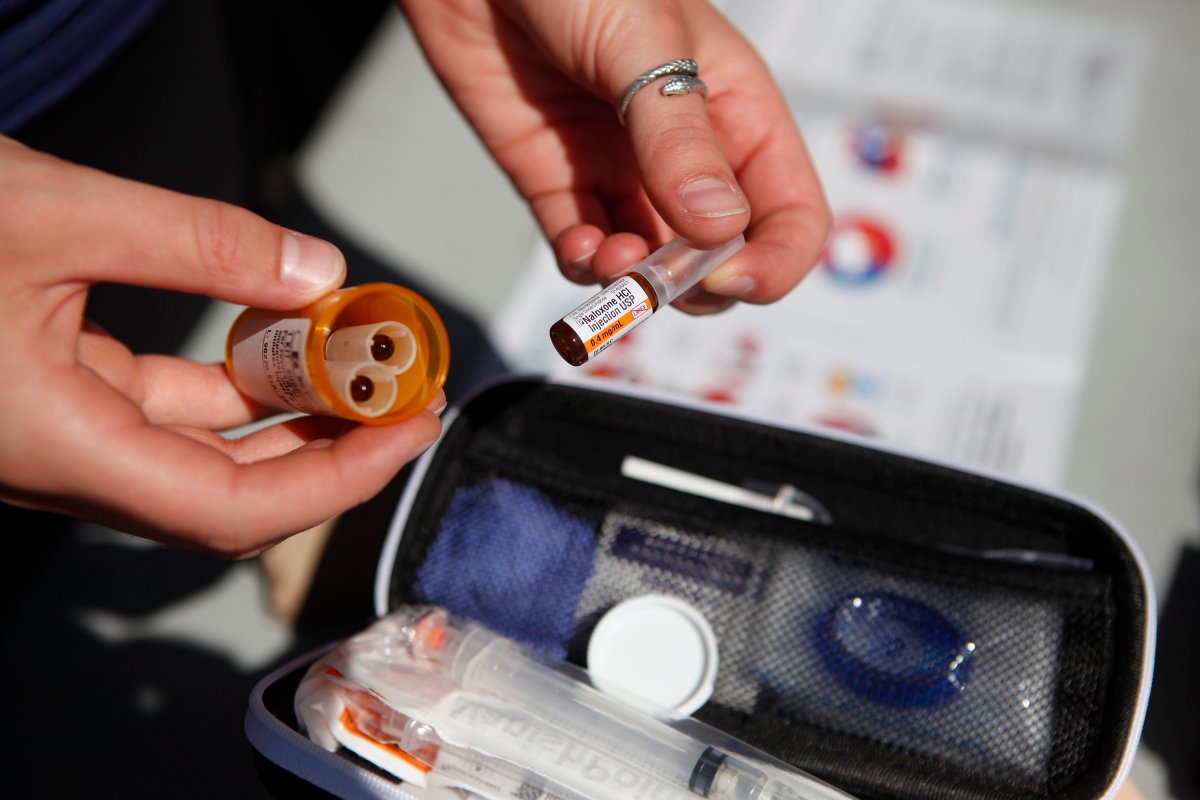The coronavirus pandemic has had an unexpected and dangerous impact on the opioid crisis in Hamilton, Ont., a local doctor says.

According to Dr. Jill Wiwcharuk, a physician with the Hamilton Social Medical Response Team, naloxone was once widely available in the city but is now in scarce supply for those who need it most, as she says it is no longer being provided at places where it was once normally accessible.
“It was distributed at the AIDS Network, it was distributed at the Wesley Day Centre when public health was there,” said Wiwcharuk. “These places are closed now. Public health is not coming into the Wesley Day Centre to distribute naloxone. The AIDS Network has had to close down. So the access to the life-saving antidote to an opioid overdose is not there like it used to be.”

She says the severity of the situation became clear to her when she assisted someone who was overdosing last week.
“It took six doses of naloxone for this individual to start breathing again. And this was a group of six people who use drugs. She was surrounded by six people who, under normal circumstances, many of them would have Narcan kits on them,” she said.
“But they didn’t. And that was so worrisome to me, that there’s less Narcan in the hands of people who are doing most of the saving of lives, which is people who use drugs.”
Wiwcharuk says public health officials have strict reporting requirements for naloxone, and she is urging the city’s public health department to relax those restrictions to make the medication more readily available.
Another issue making the situation worse is a new, more potent and deadlier kind of fentanyl that has gone into circulation due to the normal drug supply chain being disrupted by the pandemic. People who normally take large amounts of opioids are overdosing on small amounts of this new drug, according to Wiwcharuk.
“This is a tinderbox for an escalation of the opioid crisis in a huge way,” she said.
- Solar eclipse eye damage: More than 160 cases reported in Ontario, Quebec
- 3 women diagnosed with HIV after ‘vampire facials’ at unlicensed U.S. spa
- ‘Super lice’ are becoming more resistant to chemical shampoos. What to use instead
- Canadian man dies during Texas Ironman event. His widow wants answers as to why
Michelle Baird, director of epidemiology, wellness and communicable disease control for the city’s public health department, says public health is aware of the problem and is working on different ways to address it.
That includes making sure naloxone is available at the consumption and treatment site at the Hamilton Urban Core Community Health Centre as well as partnering with Grenfell Ministries and Willow’s Place to ensure they have access to the medication.
She says the street outreach van, which is staffed by both public health and the AIDS Network, is still on the streets seven days a week, responding to calls for assistance and proactively reaching out to those who might need naloxone.
“We’re looking at our own strategies to try to determine if there’s a way that we can … loosen some of the requirements,” said Baird. “Perhaps right now we give people just a couple of naloxone kits at a time. Perhaps we can give them more than two, which would make more available, obviously, in the community. We’re also looking at, are there other partners we can bring on board to help with distribution.”
Baird also says the department has heard about new kinds of drugs circulating in the community and acknowledged that increasing the supply of naloxone would help to mitigate the risk posed by more potent opioids.
She says anyone who thinks they could be in contact with someone who is at risk of overdosing should reach out to public health via 905-546-2489, and the organization will work on getting naloxone to those who need it.
“We don’t want the impact of this COVID crisis to impact those most vulnerable, where we’re seeing overdoses in our community,” said Baird. “Public health, as well as other agencies, are certainly looking to find new and creative ways to reach those that we need to reach.”





Comments